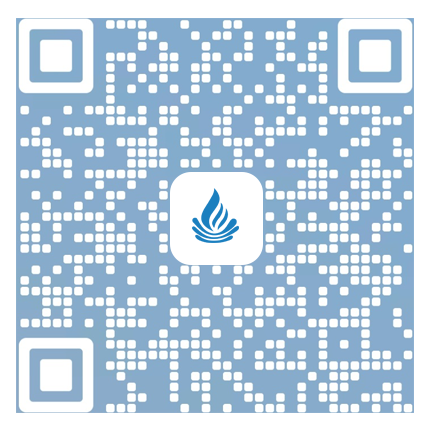This requires the description of the role of the adhesive at different stages of the battery manufacturing process.
First of all, to make the battery, we need to prepare the slurry, which contains active materials, conductive carbon, adhesives and solvents. At this stage, the main role of the adhesive is to provide viscosity to ensure the stability, fluidity and dispersion of the slurry. When we coat the slurry to form the electrode, the role of the adhesive is mainly reflected in ensuring the adhesion between the particles and the particles, particles and the current collector, preventing the powder from falling off during the manufacturing process, and the particles falling off due to repeated shrinkage and expansion during the cycle. Of course, during the electrode stage, the adhesive must also be kept in condition and cannot be crushed by the rolling process.
So when the electrode is made into a battery, what is the role of the adhesive?

This is a very important point, and it is also not considered by many adhesive suppliers, because the real use environment of adhesives is inside the battery, and there is an electrolyte, so often many adhesives test the adhesion in the state of the electrode is very good, but after the soaking of the electrolyte, the adhesion becomes significantly worse, so it is necessary to consider a bonding effect after swelling. In addition, the adhesive needs to be stable under a wide electrochemical window and not participate in side reactions, so as not to cause the problems of cycle decay and poor storage at high temperatures. The last point is not necessary, in fact, many adhesives do not conduct electrons or ions, and are inert, but with the development of technology and the broadening of applications, some adhesives with polar groups and functional bonds are also being developed. Think about it, if the adhesive is dispersed in the electrode, if it can conduct electrons and ions, wouldn't it form a better conductive network, which can effectively improve the rate performance?

Let's take a look at some common classifications of adhesives, not necessarily all, and welcome to add. The most commonly used are, of course, cathode PVDF, anode CMC, SBR.
However, there are exceptions, such as PVDF is commonly used in the anode electrode LTO, and lithium iron phosphate cathode is now also available as a water-based adhesive. In fact, new adhesives are mainly developed for some new materials. For example, for silicon anode materials with large expansion, commonly used adhesives cannot effectively restrain the volume expansion of particles, so high-strength adhesives such as PAA, PAN, PI, and PAI have been studied. Although the strength of these new adhesives has been significantly improved compared with conventional adhesives, they often bring some new problems, such as side reactions, brittleness, strong water absorption, etc., so they have not been used in batches.

According to different substituents, there are different polymers, we commonly use polyvinylidene fluoride, so, structurally speaking, the stability of PTFE is the best, PVDF can be attacked in some cases and lose small molecules, and some other side reactions occur. Although they are all PVDF, due to different manufacturers and models, there are also a wide variety of types available, in order to match the actual application, we have optimized the molecular weight, morphology, functional group modification and other aspects, so don't think that there is only one PVDF, different materials still have requirements for the selection of adhesives.

CMC, familiar for everyone, food-grade CMC is actually the largest shipment, and the amount of CMC in the battery is very limited. The solubility and stability of CMC can be controlled by Na substitution. So what is the role of CMC? Normally, we still use CMC as a thickener, but in fact, CMC also has a certain bonding effect, so it is not described separately.

Let's move on to CMC, as you can see from the figure, a small amount of CMC can effectively increase the viscosity of the slurry, improve the fluidity and coating appearance.

SBR is obtained by polymerization of the monomers butadiene and styrene. In fact, the application of large quantities is in the rubber sector, and the early adhesives are directly tested from the materials of these chemical industries, and then adjusted according to some requirements of battery applications. SBR itself is insoluble in water, so it is made into an emulsion and stored in an aqueous solution, and if it is dried, it is a yellow rubber block as shown above, which has strong elasticity.

Generally, adhesives have the above parameters that need to be paid attention to. As mentioned earlier, even if they are all PVDF, they will be different, which is often reflected in the above parameters.

From the perspective of the industry, we tend to pay attention to the above points - viscosity, solid content, slurry stability and electrode adhesion. Among them, the two methods described by the adhesion of the electrodes are both national standards - the test of drawing the lattice and the peeling force of the electrode, but the error of the method of drawing the lattice is relatively large, and it has been basically canceled now. Other properties, such as the swelling and ion-conducting properties of the adhesive, can be analyzed by some small experiments or made into batteries.

What are some of the future directions? The above diagram shows some of the development directions proposed from the perspective of the industry. For example, for applications in different fields, such as low-temperature charging and fast charging, some functional adhesives will be considered, such as the need to reduce the application of adhesives in order to further improve energy density, and the need for adhesives such as silicon anodes, lithium and sulfur can also inhibit the volume expansion during the cycle process. Different applications require different improvements, and these adhesives are not universal. In addition, the cancellation of subsidies for new energy vehicles now means that the cost of power batteries needs to be reduced, and all materials must be considered to reduce costs. Finally, it is to improve the processing performance of production and improve production efficiency.


